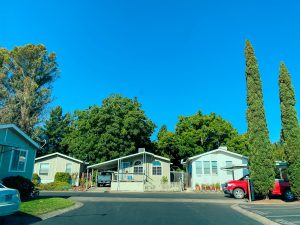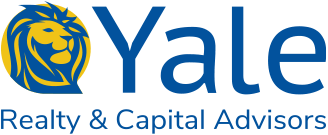

Yale’s take on the “State of the Industry” in MHInsider 👁️🗨️📖
Take a look into our State of the Industry Article by James Cook!
Manufactured Housing Communities and RV Resorts have never been worth more than today. Will that continue?
We are in a unique time that I have never seen anything like in my 15+ years of community brokerage where both buyers and sellers are mutually motivated and aligned. When I entered the business, I made my own quick benchmark that the value of lots was around 80-100 times the monthly lot rent(i.e., $250 lot rent would be worth $25,000 a site and $450 lot rent worth $45,000 a site). Today, that benchmark, as well as all benchmarks, has been rendered obsolete due to immense pressure on cap rates. The new normal, on high-quality communities, seems to be pushing 200 times monthly lot rents; however, we are seeing deals go way beyond this level if there is ample upside or growth potential. I have examples of values exceeding 300 times monthly lot rent when the upside was strong and accessible, whether it was due to below-market rents, lease-up, or even expansion.


Sellers are motivated today because the impending increases in interest rates, taxes, and regulation seem to be eroding their margins, making their life less fun, and affecting their net proceeds should they wait to sell later. For instance, if capital gains rates are done away with, as threatened by the current administration, you could see your all-in tax rate reach nearly 50% with depreciation recapture. Also, with the growing possibility of 1031’s being eliminated, owners need to consider alternate, more immediate exit strategies.
Meanwhile, buyers are motivated by the threat of real inflation and desire to be in assets that resist or even benefit from inflation. Furthermore, wage growth should translate to more demand and even higher lot rents. Lastly, there is a resurgence of folks looking to move to the suburbs and into detached housing making our asset class inherently more attractive.
Another major factor increasing values from 10+ years ago is the acceptance of the MH and RV asset class by institutional investors. This means we have gone from maybe five or six billion dollar funds investing in the space to more than 50 today with new entrants joining the fray all the time. Our equity division spends its days working with hungry operators looking to scale and buy or build a portfolio, as well as new, eager, billion and even trillion-dollar funds looking for a good jockey to bet on the industry with. The increase in capital chasing the industry has been incredible, but it comes at a pivotal time as many of these assets were built 40 or 50 years ago. The families that built these communities are now going through a generational transition, and the data shows us most businesses will not make the first leap to the second generation and even less will go from the second to the third generation.
As the new generation decides they can’t work together or the parents find it is better to sell and divide
the cash vs. leaving assets to be fought over, communities and portfolios are randomly becoming available. Now, for the investor, this generational turnover is creating enough acquisition opportunities to keep them busy and engaged. Meanwhile, the government’s unwillingness to approve the construction of new communities provides a guarantee of scarcity creating a moat around their investments.
In many cases, the residents have also benefitted from the increased investment in these assets upon turnover. Often, these properties have been held for a long time by a family that is not in a place to do massive updates and improvements. When a new investment group comes in, they are looking to the future and asking what will attract the current and next generation of residents instead of the generation it was designed for when the community was built 40+ years ago. This usually means significant investments in the infrastructure and new homes, as well as the amenities. Of course, these improvements frequently come with increased monthly rent, but the improvements and increases in advertising generally mean that their home values are maintained or even increased such that any of the residents that would rather have an affordable, old-school community can sell their homes easily and find the housing provider that caters more to them.
The biggest threat to both buyers and sellers is a significant increase in interest rates, which we have already seen run from 2.5-2.9%’s to 3.5-3.9%’s in the case of a $5m agency-qualified, 3-star community. Additionally, the significant increase in insurance rates as of late has created another threat, but neither of these factors has begun to impact values at this time. If rates rose by another 1% or if there was a sudden pullback in the credit markets, we could see a softening of the market. On the other hand, as the CMBS market returns and more lending avenues open, we could see a tightening of spreads or risk premiums the lenders are charging on top of the correlating treasury yields.
So, like most other times in life, the bird in hand is likely worth two in the bush. Even if rates rise and buyers are upside down in the short term, 10 years of improving the economics of the newly purchased property will continue to offset that. As for the seller, tax rates are much more likely to rise than fall in the coming years, based on the current political and social environment, meaning there is no better time than now to consider selling.
